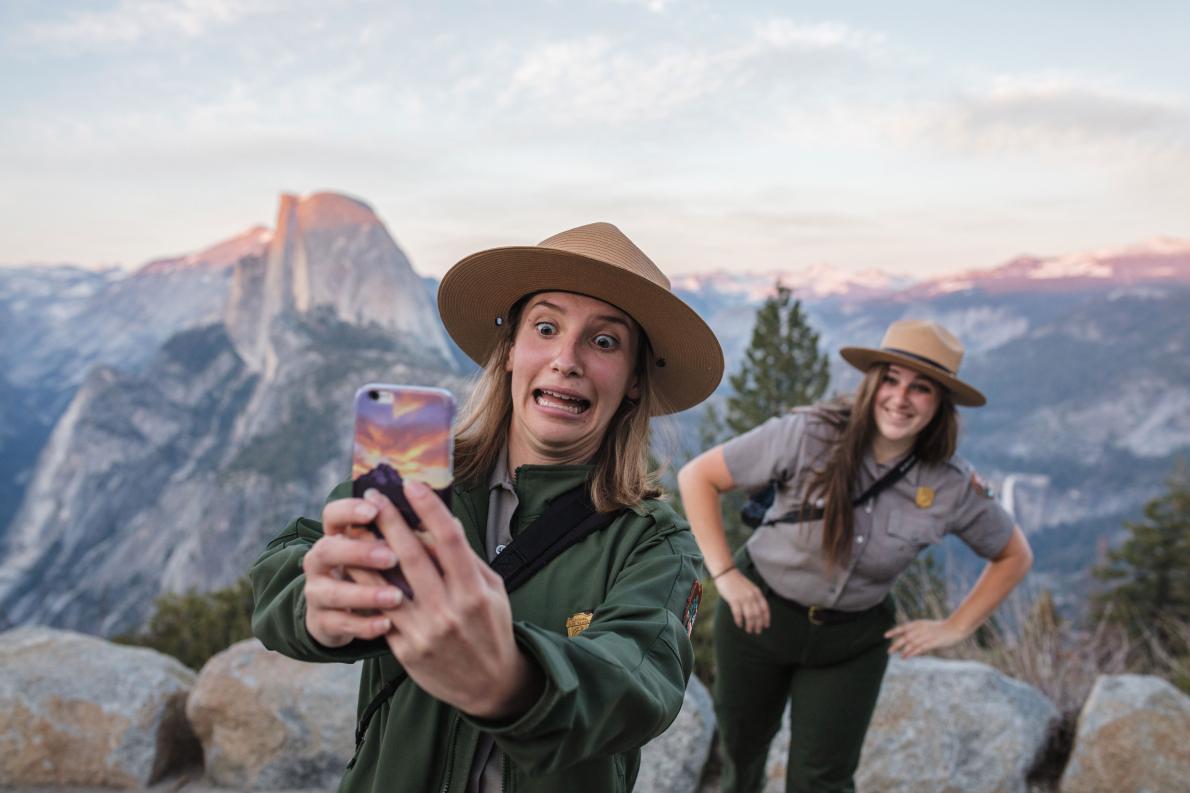Henry David Thoreau praises nature and criticizes the majority of individuals for not appreciating nature: “Nature is a personality so vast and universal”; “How little appreciation of the beauty of the land- scape there is among us!” (Thoreau, 19). Thoreau talks about the connection an individual must foster with nature: a place that has no boundaries but rather all of the space and environment around an individual. So, how would Thoreau think about smart phones and how smart phones have impacted the way millennials interact with nature? Today, 9 in 10 millennials have smart phones and 85 percent of millennials actively use social media (Pew). Further, as described by Timothy Egan and Casey Egan in National Geographic, smart phones alter the way that individuals approach nature. Smart phones prevent millennials from connecting and celebrating nature. Therefore, Thoreau would probably not be a big a fan of smart phones.
Detracting from millennials relationship to nature, smartphones have encouraged millennials to use nature to take iconic selfies, capture cool Instagrams, and gather interesting material for Facebook posts. National Geographic quotes director of National Park Service Jackson Jarvis: as a result of smart phones, “‘ Young people… are more separate from the natural world than perhaps any generation before them.”’ 71 percent of millennials said they would feel “very uncomfortable” without having “connectivity” (smart phone) for 7 days in nature. Smart phones deteriorate millennials desire to enjoy nature.
The National Park Service has created a social media campaign to engage millennials and encourage millennials to use the national parks and, in turn, to appreciate nature. The social media campaign could be an effective strategy because as Casey Egan describes, “Everyone I know [typically millennials] likes to share… if you can’t share is it really happening?” While the National Parks strategy may lead to an increase in millennials who visit the National Park, it does not solve the larger problem that smart phones and social media have led millennials to feel disconnected from and uninterested by nature.
Links:
https://www.nationalgeographic.com/magazine/2016/10/unplugging-the-selfie-generation-national-parks/
http://www.pewresearch.org/fact-tank/2018/05/02/millennials-stand-out-for-their-technology-use-but-older-generations-also-embrace-digital-life/


This topic is so interesting to discuss. I don’t know whether I agree with the idea that millennials, or young Americans are distant from nature and the environment due to technology and their self phones. I think there is a way to incorporate technology into the National Parks or other environmental destinations. For example, there are a multitude of apps pertaining to nature and the environment. There are apps to understand local bird sounds, and find ways to be more sustainable. Having apps that show virtual tours of the National Parks can also provide critical information for Americans who don’t have the resources to visit many of these National Parks. Sharing photos of visiting a National park can influence friends, family members or followers to also visit the Parks. I don’t necessarily think that taking selfies takes away from the experience of visiting a National Park or nature. Both can coexist together. However I do understand that it can provide barriers to truly engaging with the environment.